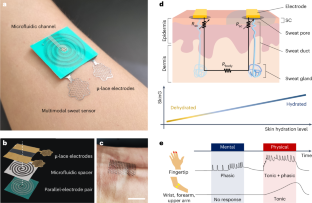2025-04-17 バッファロー大学(UB)
<関連情報>
- https://www.buffalo.edu/news/releases/2025/04/bird-flu-vaccine-lovell.html
- https://www.cell.com/cell-biomaterials/fulltext/S3050-5623(25)00061-3
高病原性鳥インフルエンザH5N1クレード2.3.4.4bヘマグルチニンおよび/またはノイラミニダーゼは組換えナノ粒子ワクチンで免疫を誘発する Highly pathogenic avian influenza H5N1 clade 2.3.4.4b hemagglutinin and/or neuraminidase elicit immunity in a recombinant nanoparticle vaccine
Qinzhe Li ∙ Robert Vendramelli ∙ Thang Truong ∙ … ∙ Richard J. Webby ∙ Darwyn Kobasa ∙ Jonathan F. Lovell
Cell Biomaterials Published:April 17, 2025
DOI:https://doi.org/10.1016/j.celbio.2025.100070
Graphical abstract

The bigger picture
The widespread emergence of H5N1 highly pathogenic avian influenza (HPAI) clade 2.3.4.4b in North America has severely impacted the agricultural sector and represents a pandemic threat for human spillover. Vaccine preparedness is therefore critical. Here, we show that recombinantly produced clade 2.3.4.4b H5 and N1 viral surface proteins can be displayed on the surfaces of immunogenic liposomes. When administered as a vaccine to mice, immunization elicited functional antibodies against H5 and N1 and consequently protected mice from lethal challenge in monovalent or bivalent format. A simplified and controlled vaccine formulation of H5 and N1 antigens in nanoparticle format offers promise for countermeasures against H5N1 HPAI clade 2.3.4.4b.
Highlights
- A liposome platform enables co-display of H5N1 clade 2.3.4.4b recombinant H5 and N1
- Vaccination with monovalent or bivalent H5 and N1 protect mice from challenge
- Nanoparticle vaccines with HA and NA have potential to address H5N1 influenza
Summary
The widespread transmission of highly pathogenic avian H5N1 influenza, clade 2.3.4.4b, in wild and livestock mammals with isolated human cases has heightened concerns for zoonotic outbreak, necessitating vaccine readiness. Here, we assess whether recombinant H5 hemagglutinin and N1 neuraminidase proteins can confer protection from disease when antigens are presented as an adjuvanted nanoparticle vaccine. Multimeric recombinant H5 and N1 derived from H5N1 clade 2.3.4.4b were coupled to liposomes that incorporated cobalt-porphyrin-phospholipid (CoPoP; for liposome display), along with the immunostimulatory adjuvants QS-21 and synthetic monophosphoryl lipid A. H5 and N1 rapidly converted from a soluble to a liposome-bound format, while maintaining reactivity with monoclonal antibody probes. Upon immunization, H5 and N1 elicited antigen-specific cellular and functional antibody responses, and bivalent H5 + N1 presentation on liposomes resulted in immune responses against both antigens, reduced viral load in lungs of infected mice, and protected them against lethal challenge with a highly virulent 2.3.4.4b H5N1 strain.


